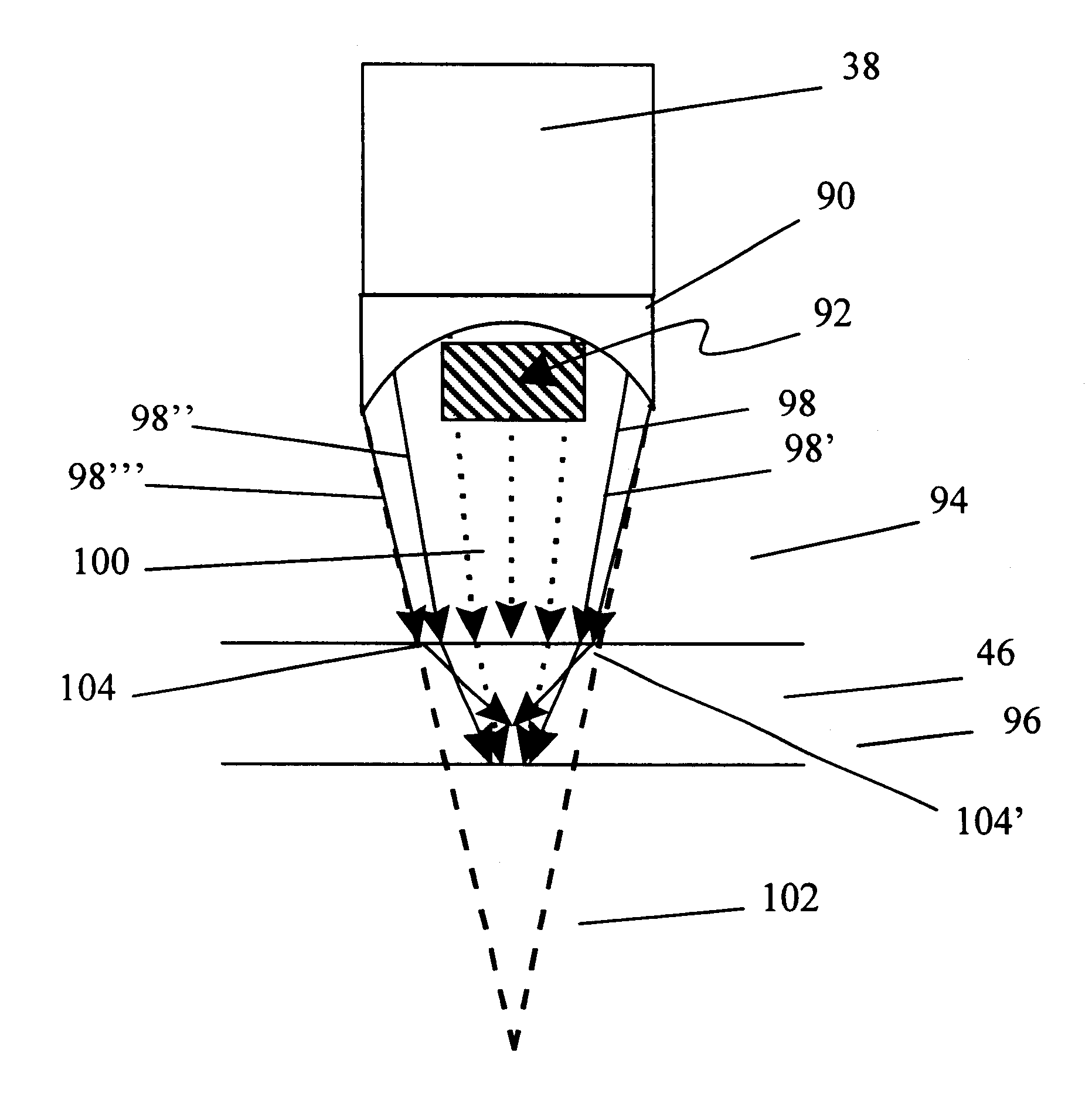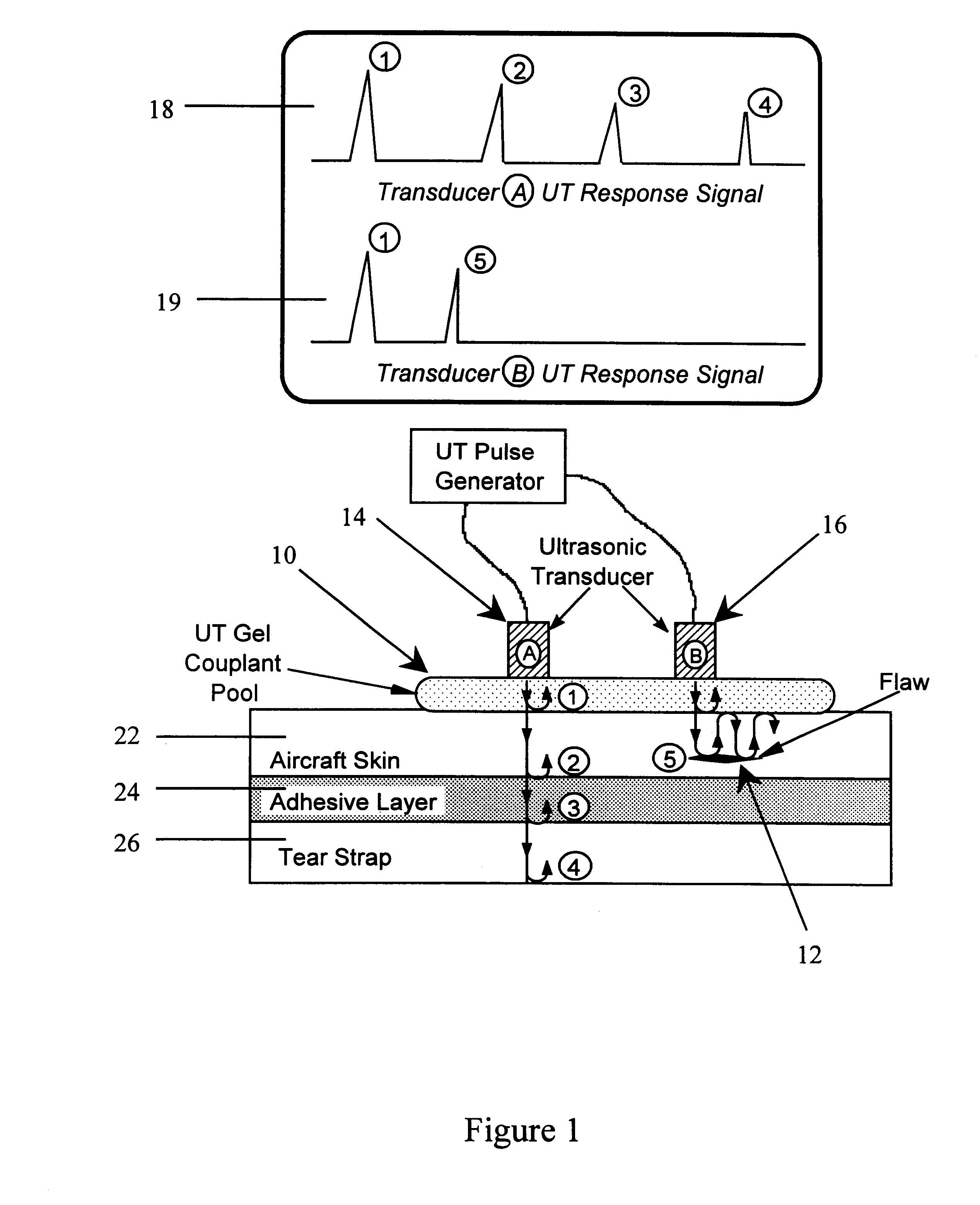Ultrasonic inspection apparatus and method using a focused wave device
a focused wave device and ultrasonic inspection technology, applied in the direction of counting objects on conveyors, instruments, specific gravity measurements, etc., can solve the problems of structural failure of composite doubler installations, cracks, disbonding, dents and gouges, etc., to improve the conventional ultrasonic inspection of structures, increase the distance traveled, and increase the distance traveled by the transmitted
- Summary
- Abstract
- Description
- Claims
- Application Information
AI Technical Summary
Benefits of technology
Problems solved by technology
Method used
Image
Examples
example
In this example, the ultrasonic inspection apparatus and inspection method using a modified focus transducer was used to identify disbonds between a composite doubler and the aluminum skin of an aircraft fuselage. A study to assess the performance capabilities of composite doublers was chosen on an L-1011 aircraft for reinforcement of the upper right corner of a cargo doorframe of the fuselage. For this application, a boron-epoxy composite doubler, or repair patch, of 72 plies was installed.
The elements of the Boron-Epoxy composite doubler are shown in FIG. 7 where the thickness dimensions are greatly exaggerated to illustrate the lay-up construction of the composite. The aluminum skins where the doublers are normally installed range in thickness from 0.04 to 0.07 inch. A typical application of a composite doubler or repair patch is shown for the case of a fatigue crack repair. Aluminum skin 114 is connected to boron-epoxy doubler 110 by adhesive layer 112. Structural damage 116, fo...
PUM
 Login to View More
Login to View More Abstract
Description
Claims
Application Information
 Login to View More
Login to View More - R&D
- Intellectual Property
- Life Sciences
- Materials
- Tech Scout
- Unparalleled Data Quality
- Higher Quality Content
- 60% Fewer Hallucinations
Browse by: Latest US Patents, China's latest patents, Technical Efficacy Thesaurus, Application Domain, Technology Topic, Popular Technical Reports.
© 2025 PatSnap. All rights reserved.Legal|Privacy policy|Modern Slavery Act Transparency Statement|Sitemap|About US| Contact US: help@patsnap.com


